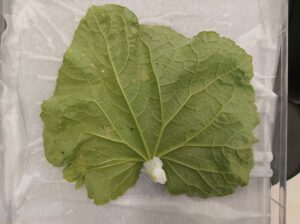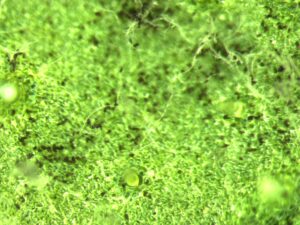Cucumber Downy Mildew Found in Lenoir County in North Carolina
go.ncsu.edu/readext?942457
en Español / em Português
El inglés es el idioma de control de esta página. En la medida en que haya algún conflicto entre la traducción al inglés y la traducción, el inglés prevalece.
Al hacer clic en el enlace de traducción se activa un servicio de traducción gratuito para convertir la página al español. Al igual que con cualquier traducción por Internet, la conversión no es sensible al contexto y puede que no traduzca el texto en su significado original. NC State Extension no garantiza la exactitud del texto traducido. Por favor, tenga en cuenta que algunas aplicaciones y/o servicios pueden no funcionar como se espera cuando se traducen.
Português
Inglês é o idioma de controle desta página. Na medida que haja algum conflito entre o texto original em Inglês e a tradução, o Inglês prevalece.
Ao clicar no link de tradução, um serviço gratuito de tradução será ativado para converter a página para o Português. Como em qualquer tradução pela internet, a conversão não é sensivel ao contexto e pode não ocorrer a tradução para o significado orginal. O serviço de Extensão da Carolina do Norte (NC State Extension) não garante a exatidão do texto traduzido. Por favor, observe que algumas funções ou serviços podem não funcionar como esperado após a tradução.
English
English is the controlling language of this page. To the extent there is any conflict between the English text and the translation, English controls.
Clicking on the translation link activates a free translation service to convert the page to Spanish. As with any Internet translation, the conversion is not context-sensitive and may not translate the text to its original meaning. NC State Extension does not guarantee the accuracy of the translated text. Please note that some applications and/or services may not function as expected when translated.
Collapse ▲Written by Mariana Prieto-Torres and Lina M. Quesada-Ocampo.
Pseudoperonospora cubensis is the causal agent of cucurbit downy mildew (CDM). This disease was confirmed on June 20, 2023 in Lenoir County on cucumbers. Disease incidence was around 1%.
When observing the upper side of the cucumber leaves, chlorotic lesions were seen. On the underside of the leaf, the characteristic dark gray sporulation of cucurbit downy mildew was present (Figure 1). Both of these are all typical symptoms and signs of CDM, respectively. Sporangia, which are microscopic structures of the causal agent (P. cubensis), were seen and confirmed on the underside of the leaf using a microscope (Figure 2).
- Figure 1. Characteristic dark gray sporulation of cucurbit downy mildew present on the underside of a cucumber leaf. Click on the image to zoom in.
- Figure 2. Microscopic sporangia on the underside of a cucumber leaf. Click on the image to zoom in.
The causal agent of cucurbit downy mildew has two clades. These clades are host specific, which means that each clade has a preference for infecting a specific group of cucurbit crops. Clade 2 isolates in North Carolina have a host preference of cucumbers as well as cantaloupes. Clade 1 isolates have a preference of watermelon, squash and pumpkin. Currently, this means that cucumber and cantaloupe crops are most at risk of CDM. This is because clade 2 isolates have arrived to the state of North Carolina via air currents. Cucumber and cantaloupe growers are strongly encouraged to take immediate action to protect their crops with effective downy mildew fungicides in North Carolina.
Since this pathogen (P. cubensis) has the potential of becoming resistant to fungicides, it is critical to have a strong spray program. A program should alternate fungicides with effective modes of action as well as protective chemistries. This will decrease the risk of isolates becoming resistant to fungicides. Our annual fungicide efficacy trials in the state of North Carolina showed differences in effectiveness in fungicides between clades (1 and 2). Therefore, please refer to our cucurbit downy mildew fact sheet. This sheet will give you important information for effective chemistries depending on the type of crops you have.
Please contact your local Extension Agent if you think you may have downy mildew in your crops or field. You can send physical samples and/or photos to the Plant Disease and Insect Clinic. After validation, please consider making a completely anonymous report to the Cucurbit Downy Mildew IPM website. Management of CDM keeps being a shared community effort because it is an airborne pathogen that has the ability to spread far distances through wind currents. Growers as well as homeowners are encouraged to actively scout cucurbit leaves for downy mildew.




